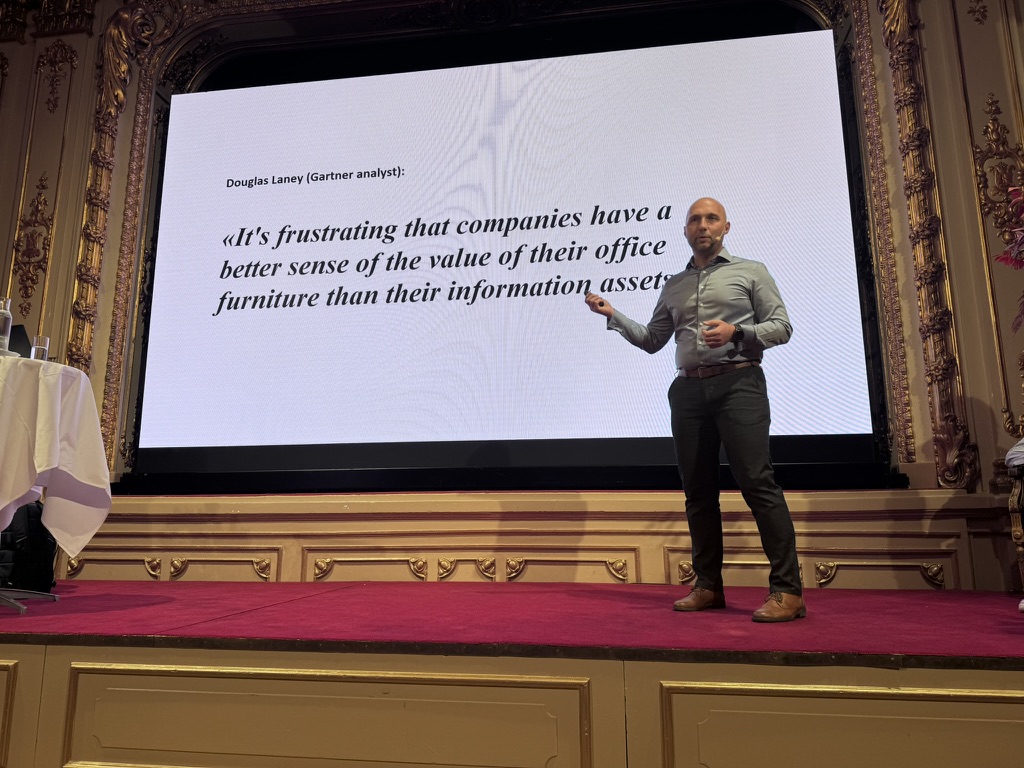In the digital era, data is the backbone of innovation and transformation. At IKEA, the global home furnishings leader, data is more than an operational necessity—it’s a strategic asset. In a recent presentation at the SAPSA Impuls event in Stockholm, George Sandu, IKEA’s Master Data Leader, shared the company’s data transformation story, offering valuable lessons for organizations navigating similar challenges.
The Challenge: A Complex Ecosystem
With operations in over 60 markets and a franchisee-franchisor model, IKEA’s supply chain is vast and intricate. Managing global and local product ranges while ensuring seamless customer experiences requires impeccable data flows.
“Every flow in our supply chain represents a data flow,” Sandu explained. “If the data isn’t high-quality, those flows break, and the customer feels it.”
This realization was the catalyst for IKEA’s decision to embrace a “Data First” approach, positioning data at the core of its business transformation.

The Strategy: A Greenfield Approach
IKEA adopted a greenfield strategy with SAP, rethinking its processes, technology, and data from the ground up. The goal? To create a connected, resilient ecosystem where data quality underpinned every operational decision.
In the early stages, IKEA focused on:
- Defining the transformation’s purpose.
- Establishing data frameworks and standards.
- Aligning people strategies with organizational goals.
However, Sandu admitted, “We had the right conversations but learned later they needed to be deeper. Frameworks and data domain thinking should have been elevated earlier.”
The Turning Point: Making Data Tangible
One of the most striking moments in IKEA’s journey was their pivot from abstract planning to hands-on demonstrations. Sandu recounted a meeting with senior leaders where PowerPoint presentations were set aside in favor of live SAP screen walkthroughs.
“We showed how orders are executed and asked, ‘What happens if this data is wrong?’” Sandu shared. The answer—”orders stop coming in”—was a wake-up call that solidified the importance of data quality. This practical approach engaged stakeholders, driving momentum and accountability across the organization.
Overcoming Challenges
No transformation is without obstacles, and IKEA faced its share:
- Data Quality: Initial data quality hovered around 50%, far from the 90% threshold required for success.
- Capability Gaps: Data migration was underestimated early on, requiring rapid adjustments and resource allocation.
- Mindset Shift: Teams had to learn to see data problems as opportunities rather than barriers.
“Red is the new green,” Sandu quipped, emphasizing the importance of addressing problems head-on. “If you’re not talking about problems, you’re not solving them.”
Building Momentum: Early Wins and Culture Alignment
IKEA prioritized small victories to sustain enthusiasm. Demonstrating tangible progress, such as improved data accuracy and operational efficiency, helped build confidence among teams.
Equally important was aligning transformation efforts with IKEA’s entrepreneurial and innovative culture. Sandu noted, “Transformation resonates when it speaks to who we are as a company.”

Looking Ahead: Scaling Success
IKEA is nearing the completion of its first SAP implementation phase, achieving 90% data quality—a significant leap from where they started.
“We’re aiming for 99%,” Sandu said, highlighting the company’s continued focus on improvement. Upcoming phases will target critical areas like Purchase-to-Pay (P2P) and Order-to-Cash (O2C), laying the foundation for long-term success.
Key Takeaways for CIOs
IKEA’s journey offers actionable insights for other organizations embarking on data transformations:
- Start Early and Stay Practical: Begin with foundational conversations, but don’t stop there. Make data issues visible and relatable to stakeholders.
- Embrace Problems as Opportunities: Acknowledge challenges early and turn them into learning experiences.
- Celebrate Wins to Sustain Momentum: Even small achievements can build organizational confidence.
- Align with Company Culture: Transformation efforts must resonate with the organization’s values and identity.
Conclusion: Data as a Strategic Asset
For IKEA, data is not just a tool—it’s a cornerstone of its business strategy. Sandu’s closing thoughts underscored this perspective: “Data is not just a support function—it’s a strategic enabler for our business.”
As companies worldwide grapple with the complexities of digital transformation, IKEA’s story serves as both inspiration and a practical roadmap. By starting with the right mindset, prioritizing quality, and aligning with their culture, they’ve shown what’s possible when data truly leads the way.
